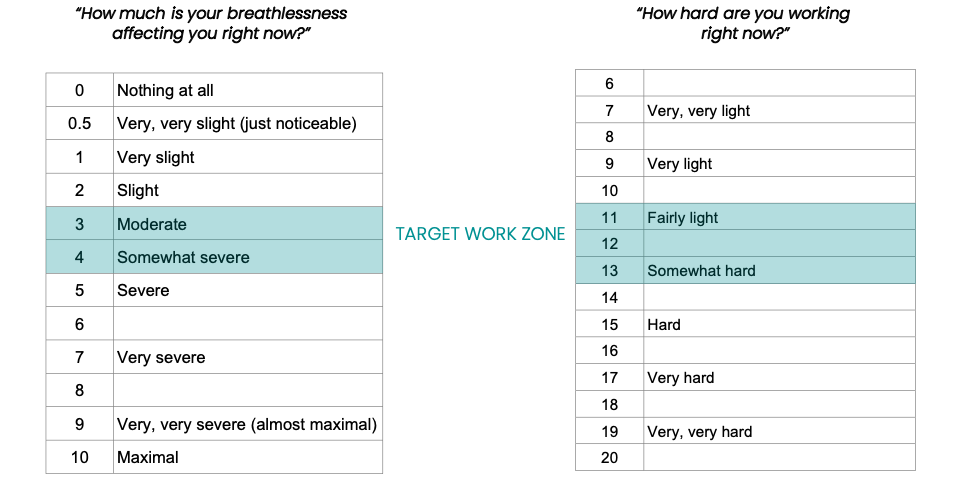EARLY RECOVERY
People affected by COPD flare-ups often require support to transition back to a physically active lifestyle.
This process ideally starts during the time of hospitalisation and continues well after discharge. It can be helpful to categorise the path to recovery according to different phases (outlined below):

Phase 1 usually involves regular short walks around the hospital ward (sometimes using a walking frame), simple leg exercises (e.g. repeated sit-to-stands from a chair or heel raises), education about breathing control and energy conservation strategies, and how to monitor how hard you are working. It should also include discussion about physical activity and pulmonary rehabilitation options after discharge.
Phase 2 represents the time between leaving hospital and starting a pulmonary rehabilitation program. Key goals of this phase include achieving a healthy amount of walking, recovering any lost muscle strength from the inactivity of hospitalisation, and restoring confidence to re-engage in usual community-based activities or hobbies. As waitlist times to start pulmonary rehabilitation can be long, it may be advisable to seek guidance from a healthcare professional such as a physiotherapist or enlisting a tool such as a home exercise booklet to progress your recovery during phase 2.
Phase 3 involves undertaking pulmonary rehabilitation. This is typically a structured, supported multidisciplinary program of rehabilitation and education. More information is provided on the pulmonary rehabilitation section of this website.
Phase 4 represents the period where individuals aim to maintain the lifestyle adaptations and benefits facilitated during pulmonary rehabilitation. This may involve joining a maintenance (exercise) program or gym as part of maintain a physically active lifestyle.
Keep moving as much as possible during your flare-up. Start small and gradually increase over time. Ask your physiotherapist or nurse for help if needed.
Physical activity following hospital discharge
Although symptoms may have improved during a hospital admission, they are often still heightened from your baseline when you return home. It is anticipated that your tolerance of physical activity or exercise therefore will not be as great as they were prior to the flare-up.
It is worth being intentional about your physical function recovery by making an activity plan with your healthcare professional to follow when you return from hospital. The lack of a physical activity routine following discharge is a risk factor in itself for readmitting to hospital, and conversely, increased physical activity levels has preventative effects for readmission.
A physiotherapist or occupational therapist can advise you on energy conservation strategies and activity pacing, and prescribe a structured reactivation program that aims to strike the right balance between early activity and intentional rest.
How much physical activity should you undertake?
As everyone’s needs and abilities differ, the precise amount of physical activity for ‘reactivation’ that you should undertake should be guided by your physiotherapist or appropriately qualified healthcare professional, preferably using a documented recovery plan. One of the most important skills to develop is the ability to monitor how hard you feel you are working. Two common approaches are used for this purpose:
1. Rating how breathless you feel while completing activities via a breathlessness scale. This is most relevant for people who find breathlessness is the main factor limiting how much they can do;
2. Rating how hard you feel you are working via a rating of perceived exertion scale. This is relevant for anyone, but may be particularly useful for those who find breathlessness is not the main factor limiting how much they can do – some people find they are limited by leg fatigue/soreness or overall effort.

Monitoring your physical reactivation progress
In order to assist your return to physical activity levels, it is strongly advised that you develop a physical activity / exercise plan with a physiotherapist or other appropriately qualified healthcare professional before you leave hospital. This involves establishing achievable goals, providing education on how to safely perform activities and determining the right amount of physical activity and/or exercise for you.
Use the LungFlareCare ‘Early Physical Reactivation Plan‘ (right) to help with this, or view the short video below for examples of simple exercises that may be appropriate for you to complete at home.
